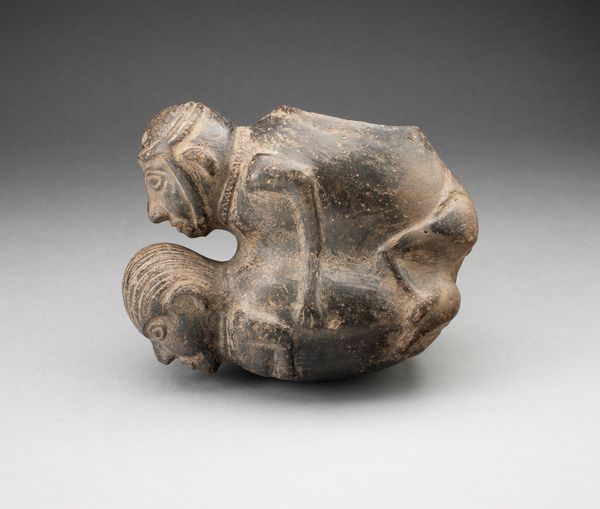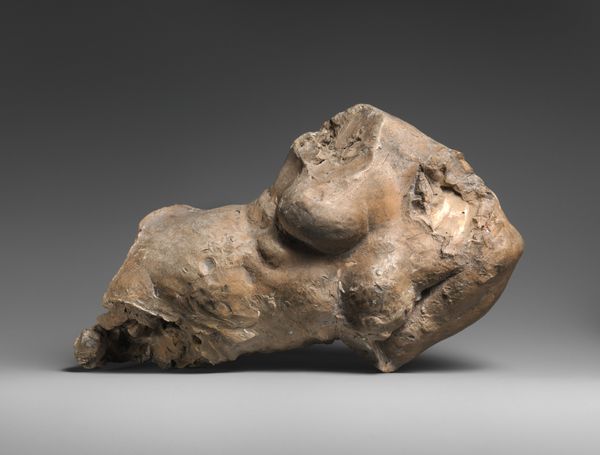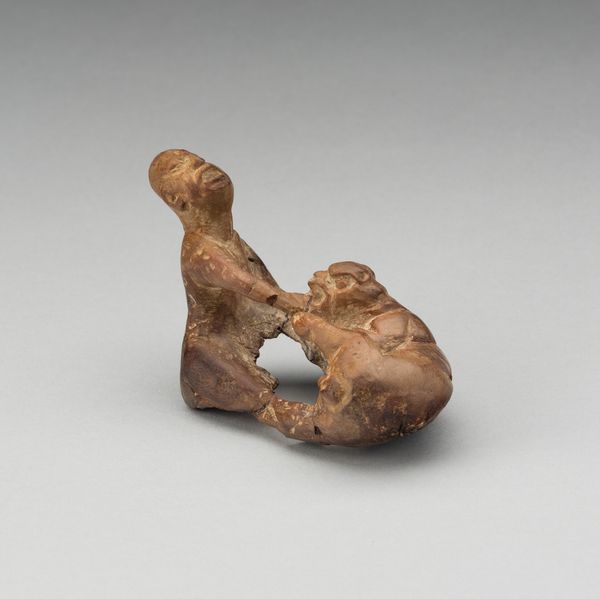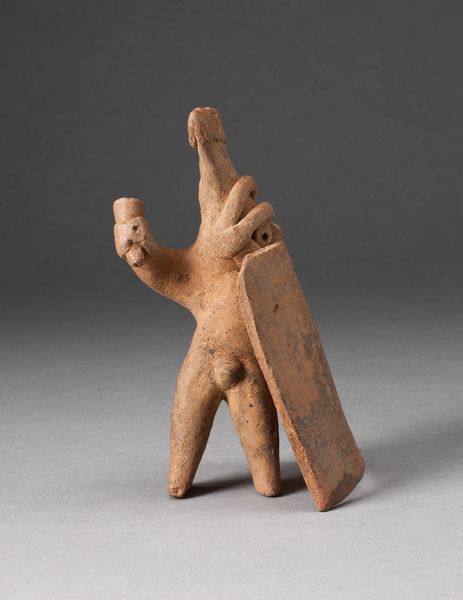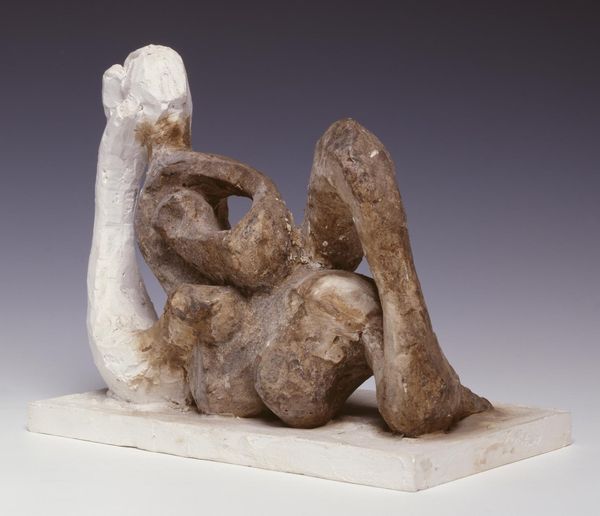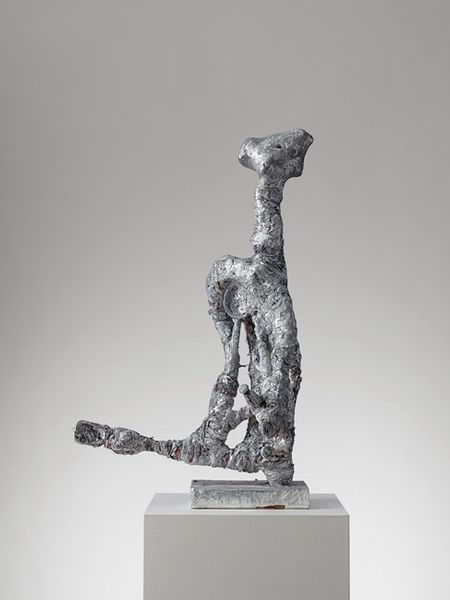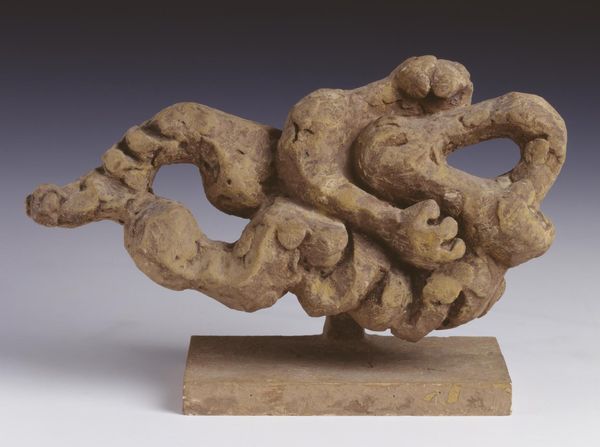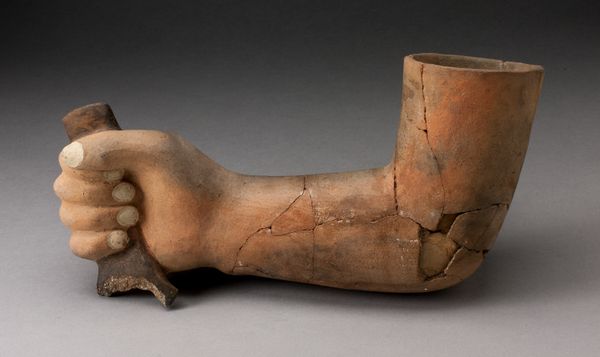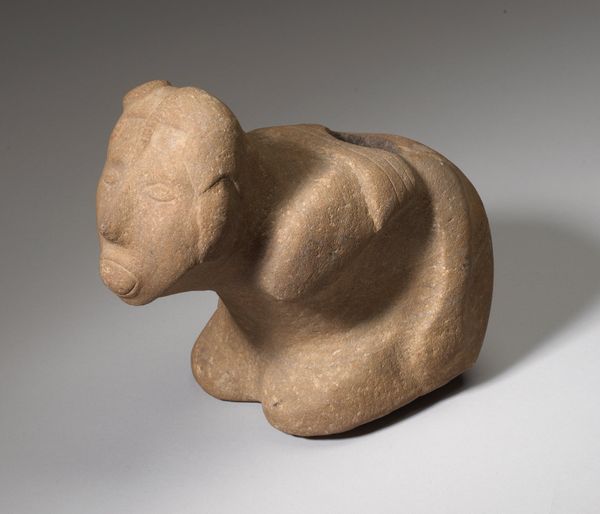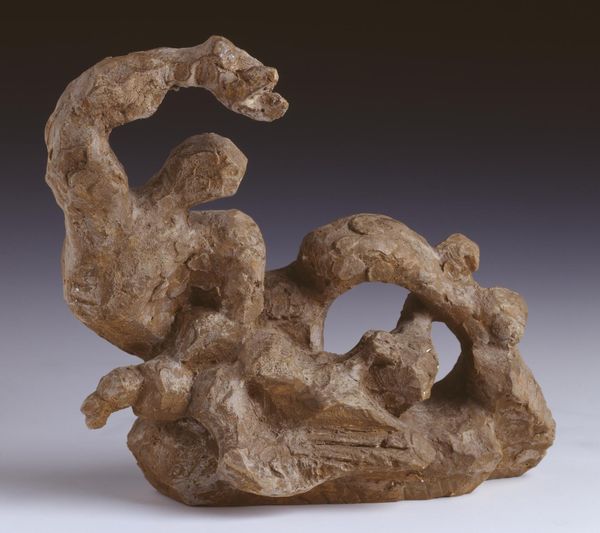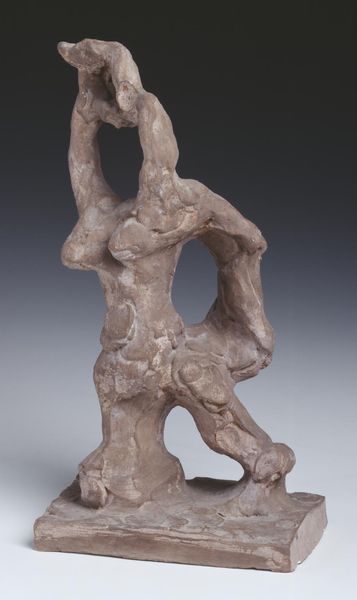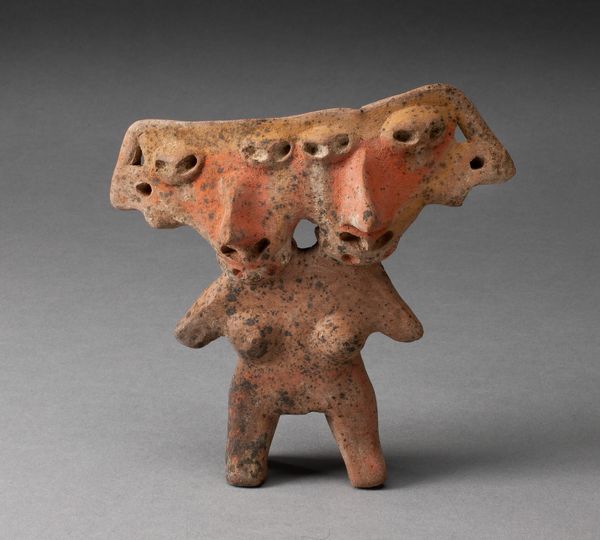
Dimensions: object: 230 x 455 x 189 mm, 11.1 kg
Copyright: © Bowness, Hepworth Estate | CC-BY-NC-ND 4.0 DEED, Photo: Tate
Curator: This is Dame Barbara Hepworth's "Mother and Child," a marble sculpture held in the Tate collection. Its date is unknown, but Hepworth’s exploration of this subject is extensive. Editor: The piece feels so tactile, almost begging to be touched. The cool smoothness of the marble gives an impression of intimacy and strength, even in its abstract form. Curator: Motherhood is a recurring motif in art history, often depicted with idealized figures. Hepworth’s abstract forms, however, seem to tap into a deeper, more universal essence of the bond, suggesting ancient fertility symbols. Editor: Speaking of the marble, the veins and variations in its color are integral to the work. The material’s own history and geological formation become part of the narrative of creation and sustenance. Curator: Indeed. The holes carved into the stone also evoke a sense of openness and connection between the figures. It's a clever use of negative space, implying presence and absence. Editor: I can see how this kind of carving must have been intensely laborious and physical, carving away the stone and yet simultaneously preserving its integrity. Curator: It makes me think about the enduring power of maternal love, a primal connection represented in this enduring material. Editor: Absolutely, and appreciating the material and labor makes me feel closer to its origins and meaning.
Comments
tate 6 months ago
⋮
http://www.tate.org.uk/art/artworks/hepworth-mother-and-child-t06676
Join the conversation
Join millions of artists and users on Artera today and experience the ultimate creative platform.
tate 6 months ago
⋮
Hepworth’s child perches on the knee of its reclining mother, implying a continuity of material. Yet, looking at the veining of the stones, we can see that they are separate forms. In the early 1930s, Hepworth was starting to create more complex, multi-part sculptures. She developed a range of new abstract forms by carving holes into her works. This hole suggests that the child has come from – and outgrown – the vacant space in the centre of the mother’s body. Gallery label, May 2021
